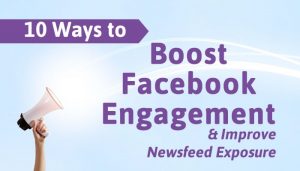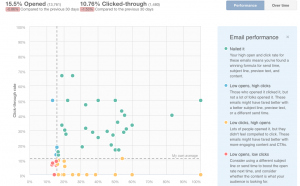— July 13, 2019
There are currently 3.84 billion social media users worldwide. Business owners are continually looking for new ways to expand their brand all while generating more leads and landing more conversions. It’s no wonder what many companies are taking to social media to try and drive more traffic to their storefront or bring more readers to their blog.
If you’re considering using social media to expand your business, it’s essential that you understand some of the primary metrics used when looking at social media statistics. Let’s take a close look at some of the most important metrics you need to understand if you’re a marketer thinking about taking on social media.
Shares & Mentions
Shares and mentions are important if you want to boost engagement on your social media page. Consumers engage with a post when they retweet, comment, share, or mention you on social media. All of these factors are important, but shares and mentions are the most reliable sources of information when you want to discover how well a piece of content or post is doing online.
You can then use this information to build social proof on your website, as we can see below with a share counter. This tactic is excellent for getting readers who find your blog to share your content because they can see that other people online also found this content useful, which justifies their decision to share your post, which will help you get more shares and mentions in the future.

Number of Leads
Sixty-one percent of B2Bs and 96 percent of bloggers use social media to generate leads and share content. All of these individuals can track their total leads on social media so they can gauge what’s working, and learn where they can improve.
If you’re not getting enough organic leads through search engines, you could try using social media as a way to increase your visibility and improve your number of leads and sales. You can get specific and use tracking pixels on your advertisements to learn where your audience is coming from online. This metric is so important because you can safely identify and fix your weak points by looking at the statistics. For example, if you notice that your content is seeing healthy engagement, but your advertisements are lackluster, it may be time to rethink your advertising campaign.
Reach & Impressions
There is often confusion when discussing reach and impressions. The truth is, these metrics are different from one another, but they are both vital to a great social media marketing campaign.
Let’s start with impressions. Impressions refer to the total number of times someone looked at a post or status update. For example, if you were to see 2,000 impressions on a post or ad, that means that it showed up in newsfeeds 2,000 times. If each person saw your advertisement twice, that would mean your reach is 1,000.
Reach is the number of unique visitors who land on a page, not just the number of times it popped up in a newsfeed. If you see that your reach is 2,000, that means 2,000 individuals saw your post, so your impressions may be 5000 or more.
You need to know these numbers so you can figure out what kind of impact you’re having with potential customers and prospects. Your goal is to expose your ad to many people, multiple times. The more times people see your advertisement, the more likely they are to remember your brand and visit your website.
Conclusion
Increasing your conversions and sales can be challenging to new and veteran business owners alike. Building a healthy social media account where you post content frequently and engage with your audience can help you achieve your business goals. It’s vital that you regularly look at your metrics and learn when you should make changes to improve your statistics. The metrics we mentioned above are the most important factors to consider when you’re trying to expand your company online.
Digital & Social Articles on Business 2 Community
(17)







